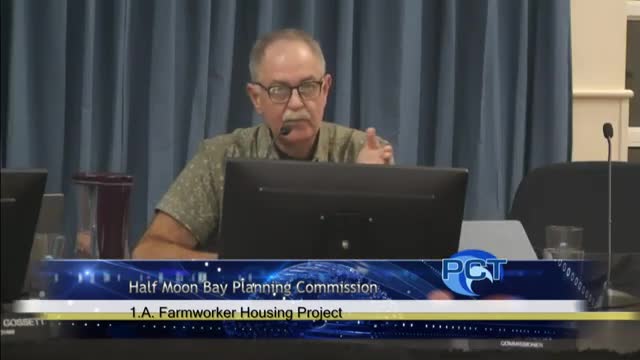Officials scramble to ensure flood safety for vulnerable communities
October 25, 2024 | Half Moon Bay, Half Moon Bay City, San Mateo County, California
This article was created by AI summarizing key points discussed. AI makes mistakes, so for full details and context, please refer to the video of the full meeting. Please report any errors so we can fix them. Report an error »

In a recent government meeting, officials discussed critical flood safety measures and emergency preparedness in light of potential flooding risks associated with local development projects. A key point of contention was the elevation requirements for new constructions in relation to the 100-year floodplain, with local land use plans stipulating that all projects must be at least two feet above this threshold.
Concerns were raised about the safety of residents living near Piliparitos Lake, which holds approximately 31,100 acre-feet of water—equivalent to about one billion gallons. The potential for catastrophic flooding was underscored, particularly in the wake of recent storms that have tested local infrastructure. Officials acknowledged that while the project site is designed to be three to four feet above the 500-year flood level, the unpredictability of severe weather events necessitates robust emergency evacuation plans.
The discussion highlighted the importance of understanding the flood risks not only for the new development but also for surrounding communities, particularly those that may be more vulnerable. Questions were posed regarding the adequacy of evacuation routes and the potential impact of flooding on these areas. Officials reassured attendees that the project would not alter the existing floodplain or increase downstream flooding risks.
Emergency management strategies were also a focal point, with plans in place to update the local hazard mitigation plan and develop a comprehensive evacuation strategy that encompasses both coastal and bay-side communities. The urgency of these preparations was emphasized, especially in light of the potential for rapid flooding scenarios, such as a dam failure, which could provide as little as 60 minutes of warning.
Overall, the meeting underscored the need for ongoing vigilance and proactive measures to ensure the safety of residents in flood-prone areas, as well as the importance of clear communication and planning in the face of natural disasters.
Concerns were raised about the safety of residents living near Piliparitos Lake, which holds approximately 31,100 acre-feet of water—equivalent to about one billion gallons. The potential for catastrophic flooding was underscored, particularly in the wake of recent storms that have tested local infrastructure. Officials acknowledged that while the project site is designed to be three to four feet above the 500-year flood level, the unpredictability of severe weather events necessitates robust emergency evacuation plans.
The discussion highlighted the importance of understanding the flood risks not only for the new development but also for surrounding communities, particularly those that may be more vulnerable. Questions were posed regarding the adequacy of evacuation routes and the potential impact of flooding on these areas. Officials reassured attendees that the project would not alter the existing floodplain or increase downstream flooding risks.
Emergency management strategies were also a focal point, with plans in place to update the local hazard mitigation plan and develop a comprehensive evacuation strategy that encompasses both coastal and bay-side communities. The urgency of these preparations was emphasized, especially in light of the potential for rapid flooding scenarios, such as a dam failure, which could provide as little as 60 minutes of warning.
Overall, the meeting underscored the need for ongoing vigilance and proactive measures to ensure the safety of residents in flood-prone areas, as well as the importance of clear communication and planning in the face of natural disasters.
View full meeting
This article is based on a recent meeting—watch the full video and explore the complete transcript for deeper insights into the discussion.
View full meeting
